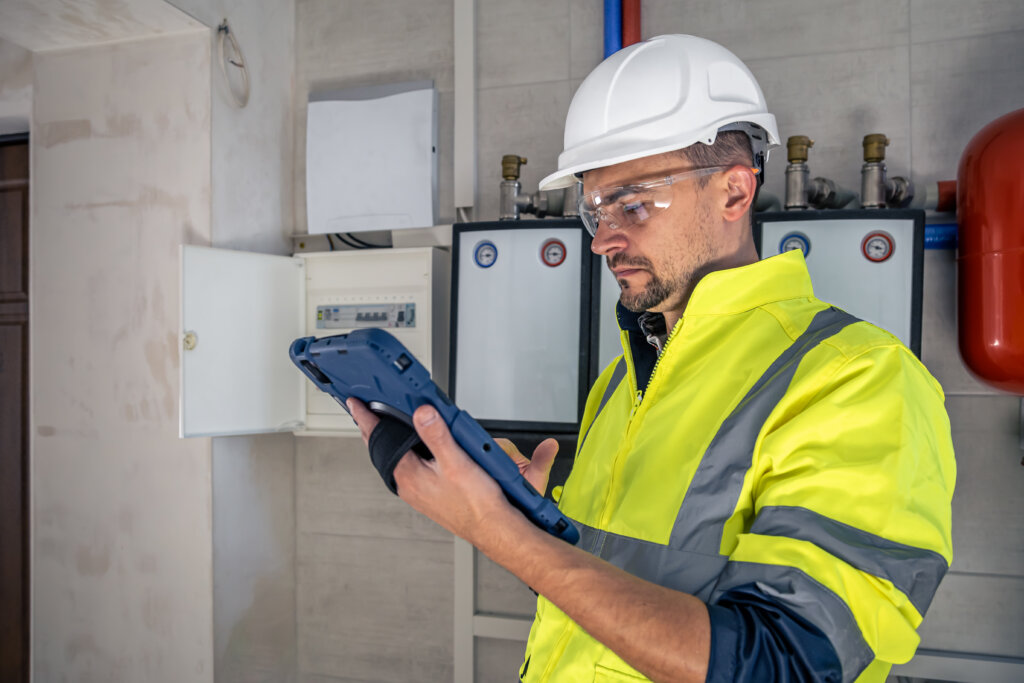Predictive Maintenance in HVAC
Predictive Maintenance is a data-driven maintenance approach that uses real-time monitoring, sensors, and analytics to predict when HVAC equipment is likely to fail or require servicing. Unlike traditional reactive maintenance (fixing after failure) or preventive maintenance (scheduled servicing), predictive maintenance enables technicians to address issues precisely when needed, before they cause system breakdowns.
What is Predictive Maintenance in HVAC?
Predictive maintenance in HVAC systems leverages sensor technology and data analysis to continuously monitor equipment condition. Smart sensors measure critical parameters such as temperature, pressure, vibration, and energy consumption, transmitting this data to centralized systems where algorithms analyze performance patterns. When the system detects anomalies or trends indicating potential failure, it generates alerts for maintenance teams to take proactive action.
The approach represents a fundamental shift from waiting for equipment failure or performing maintenance at predetermined intervals to scheduling maintenance at the optimal time—not too early that useful equipment life is wasted, and not too late that failure causes system downtime.

Types of Predictive Maintenance Techniques
Condition-Based Monitoring (CBM)
Real-time monitoring of HVAC components using sensors to measure temperature, vibration, and pressure parameters. This technique enables maintenance activities based on actual equipment condition rather than fixed schedules.
Prognostics and Health Management (PHM)
Advanced approach that estimates the Remaining Useful Life (RUL) of HVAC components by analyzing current and historical data. PHM systems incorporate algorithms that predict future failures, enabling precise maintenance scheduling.
Vibration Analysis
Monitoring of rotating equipment such as fans, compressors, and pumps to detect mechanical issues before they lead to failure. Vibration sensors identify imbalances, bearing wear, and alignment problems.
Thermal Imaging
Infrared thermography to detect temperature anomalies in electrical components, heat exchangers, and insulation systems. This technique identifies hot spots that may indicate failing components or energy inefficiencies.
Oil Analysis
Laboratory testing of lubricants in HVAC equipment to assess contamination levels, viscosity changes, and wear particle content, providing insights into internal component condition.
Advantages of Predictive Maintenance
Reduced Downtime
Companies report up to 50% reduction in downtime through predictive maintenance implementation. By identifying potential failures before they occur, maintenance can be scheduled during off-peak hours, avoiding disruption to normal operations.
Cost Savings
Early detection of issues allows for less expensive repairs compared to major breakdowns. Predictive maintenance eliminates unnecessary maintenance activities and reduces labor costs through automation.
Extended Equipment Lifespan
Regular monitoring and early intervention prevent extensive wear and tear on HVAC components, allowing equipment to reach its full life expectancy and providing better returns on investment.
Improved Energy Efficiency
Well-maintained HVAC systems operate at peak performance, reducing energy consumption and lowering utility bills. This efficiency aligns with sustainability goals by reducing carbon footprint.
Enhanced Safety
Predictive maintenance helps maintain proper environmental conditions including CO2 levels, temperature, and humidity, ensuring occupant comfort and safety. This is particularly crucial in medical facilities and commercial buildings.
Disadvantages and Challenges
High Initial Investment
Implementation requires significant upfront costs for sensors, monitoring equipment, software platforms, and system integration. The initial investment can be substantial for organizations with limited budgets.
Specialized Skills Requirement
Predictive maintenance demands specialized technical expertise for data interpretation, system configuration, and maintenance decision-making. Organizations may need to invest in training or hire specialized personnel.
Technology Complexity
Integration of IoT devices, data analytics platforms, and existing HVAC systems can be complex, requiring careful planning and technical expertise to ensure proper implementation.
Data Management Challenges
Continuous monitoring generates large volumes of data that must be processed, stored, and analyzed effectively. Organizations need robust data management infrastructure and analytics capabilities.
Compliance and Regulatory Considerations
Predictive maintenance in HVAC must align with various regulatory requirements:
Environmental Regulations
F-Gas Regulations: Track refrigerant use, prevent leaks, and maintain servicing logs for systems with ≥5 tonnes CO₂ equivalent
EPA Clean Air Act: Proper handling and disposal of ozone-depleting substances
Safety Standards
OSHA Requirements: Ensure safe ventilation and access to mechanical rooms under workplace safety mandates
ASHRAE Standards: Maintain proper airflow, filter replacement, and temperature control to meet Indoor Air Quality standards
Building Codes
Local fire and building codes often require regular checks on duct cleanliness, pressure systems, and emergency ventilation systems.
Common Applications
Predictive maintenance addresses various HVAC maintenance needs including:
- Air filter monitoring for optimal airflow and indoor air quality
- Heat pump performance optimization to maintain energy efficiency
- Refrigerant leak detection to prevent energy consumption increases
- Electrical connection monitoring to prevent unexpected system failures
- Drain blockage prevention to avoid water damage
- Coil freeze protection to maintain cooling capacity
- Duct system integrity monitoring for optimal performance
- Thermostat accuracy verification for proper temperature control
- Chiller performance monitoring in large commercial facilities
Predictive maintenance represents the evolution of HVAC maintenance from reactive and scheduled approaches to intelligent, data-driven decision making that optimizes system performance, reduces costs, and ensures reliable operation.
Our trusted customers











